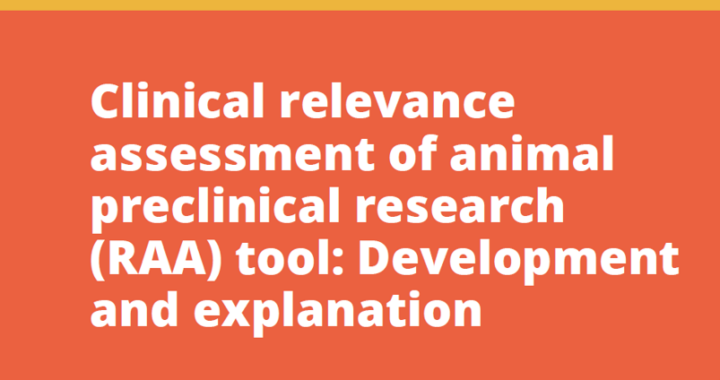Prof Kurinchi Gurusamy and his co-authors (including Dr Nikki Osborne) have published an exciting new research assessment tool.
The RAA tool has been developed to assess the likelihood that therapeutic preclinical findings (from animal studies) will translate into improvement in the management of human diseases.
Why is this needed?
Across a range of bioscience disciplines documented examples exist describing preclinical animal studies that have identified potentially beneficial therapeutic interventions, but failed to translate into the clinical setting. Over the last 5-10 years there has been a huge upsurge in the use of systematic review and meta-analysis methodology to try and identify the causes of this translational failure. Specific details vary between disciplines, but poor translational value is often attributed to the poor design, conduct, analysis and reporting of preclinical studies. Unfortunately, many poor practices have become so common place and entrenched that it can be challenging for researchers to be able to identify them. The impact that such poor practices are having on the rigor and reproducibility of the scientific record is however increasingly apparent.
Over recent years various stakeholders within the biomedical community have put effort into raising awareness of the problems. Collectively progress has been made. Training, tools and resources have been developed to support individual researchers to design, plan, conduct, analyse and disseminate their research in a more rigorous and reproducible way. Awareness and implementation of the use of systematic review and meta-analysis methodologies is also growing. This has enhanced the whole communities’ abilities to identify flaws and limitations within preclinical animal studies. All these interventions are necessary and worthwhile, but can go unnoticed by busy individuals, including peer reviewers. The aim of the RAA tool is thus to assist peer reviewers and others within the research community to more easily assess the likely clinical relevance of preclinical animal studies being proposed, or reported.
Why use this tool?
The insights this tool can provide into the rigor and translational value of a preclinical study has many potential benefits for the whole research community.
Reviewers can use the tool to inform their assessment of the quality of the research described – thus improving the reliability of research that gets funded and/or published.
Researchers can use it to review and improve their own research practices – thus contributing to the development of best practice and the value of the research they conduct.
Students can use the tool to identify potential flaws and limitations with a given methodology or within an existing evidence base – to maximise the lessons learnt from the past mistakes of others.
To learn more about this exciting new RAA tool and how to use it please join Prof Kurinchi Gurusamy and Dr Nikki Osborne as they discuss their Guide to Assessing the Translational Value of Preclinical Animal Studies during this FREE on demand Responsible Research webinar.
For details regarding all previous and up coming FREE Responsible Research Webinars visit our website.
Reference:
- Gurusamy KS, Moher D, Loizidou M, Ahmed I, Avey MT, Barron CC, Davidson B, Dwek M, Gluud C, Jell G, Katakam K, Montroy J, McHugh TD, Osborne NJ, Ritskes-Hoitinga M, van Laarhoven K, Vollert J, Lalu M. (2021). Clinical relevance assessment of animal preclinical research (RAA) tool: development and explanation. PeerJ 9:e10673 DOI 10.7717/peerj.10673 https://doi.org/10.7717/peerj.10673 (NOTE – this paper is available open access).







